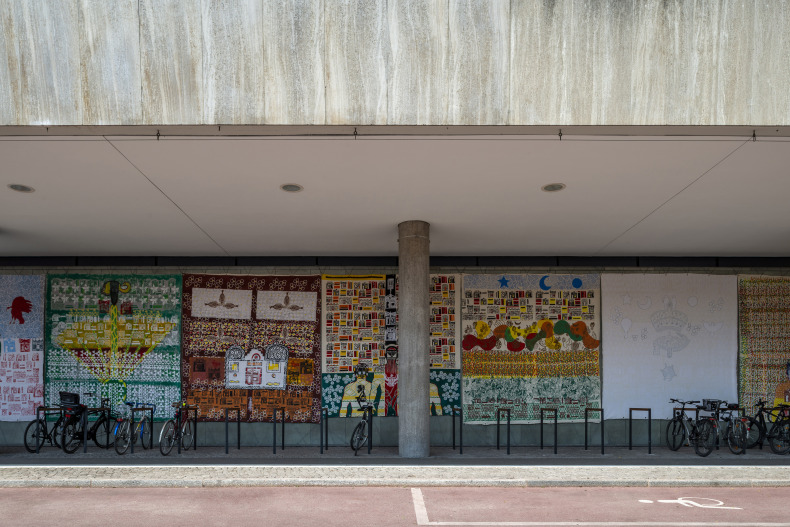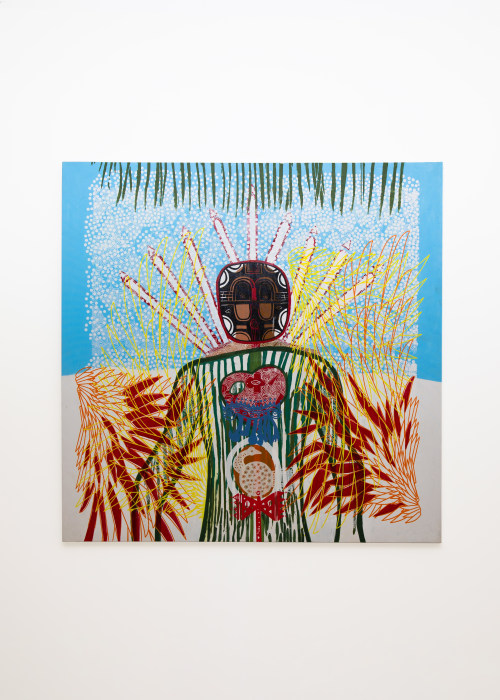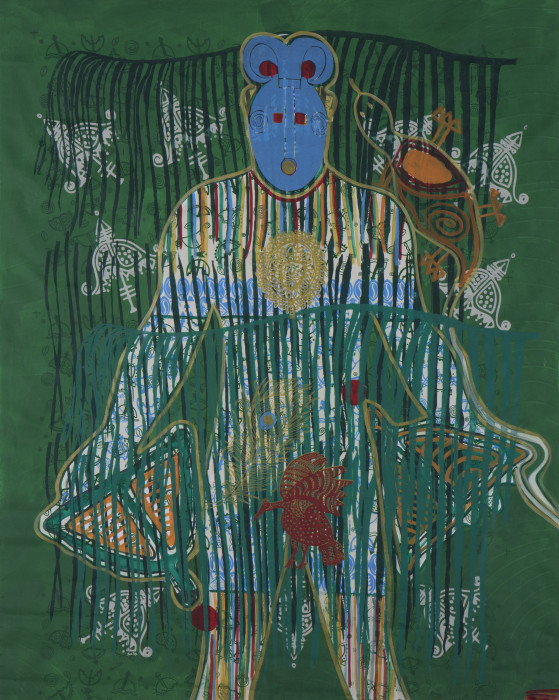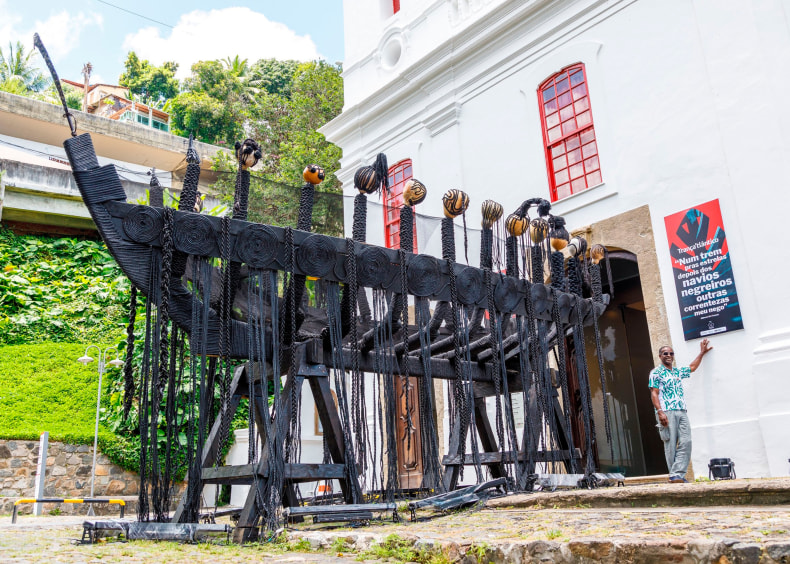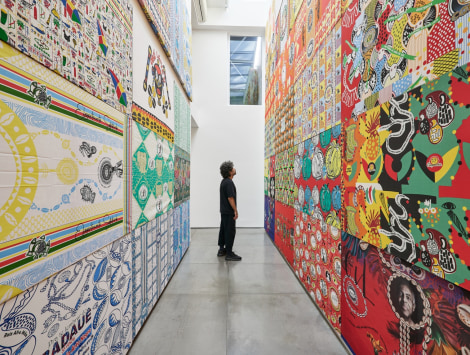Biennale of Sydney 2024, 2024
Biography
Alberto Pitta's work is centered on textile printing and serigraphy, although he has also dedicated himself to painting and sculpture in recent years. With a career spanning more than four decades, Alberto Pitta's production is closely linked to popular festivities and in dialogue with other languages, such as fashion and dance, his work has a strong public dimension, having created prints for Afro carnival blocks such as Olodum, Filhos de Gandhy and his own, Cortejo Afro.
His print production began in the 1980s. They feature signs, shapes and strokes that evoke traditional African and Afro-diasporic elements, especially those from Yoruba mythology, which is very present in Salvador and the Bahian recôncavo. In the words of curator Renato Menezes: "In fact, signs, shapes and lines that evoke traditional African graphics have found, on their fabrics, a privileged place for educating the masses and telling stories that only make sense collectively. If the writing in Pitta's work is organized in the set of patterns and colors that reinterpret the Yoruba worldview, the reading, on the other hand, concerns the relationship established in the contact between bodies in movement, when the city streets become a terreiro. Through the folds of the fabrics that cover the revellers runs an alphabet of letters and affections, mobilized by music and dance: it is in the body of the other that the text that completes us is read."
Alberto Pitta has participated in important exhibitions in Brazil and internationally. His solo shows include Outros Carnavais, at Nara Roesler Rio de Janeiro (2024), Brazil; Mariwó, at Paulo Darzé Galeria (2023), in Salvador, Brazil, and Eternidade Soterrada, organized by Carmo & Johnson Projects (2022) in São Paulo, Brazil. His group exhibitions notably include his participation in the 24th Biennale of Sydney (2024); Lélia em Nós: Festas Populares e Amefricanidade, at Sesc Vila Mariana (2024), São Paulo, Brazil; Stirring the Pot, at Casa da Cultura da Comporta, Portugal; O Quilombismo: Of Resisting and Insisting. Of Flight as Fight. Of Other Democratic Egalitarian Political Philosophies, at Haus der Kulturen der Welt, in Berlin, Germany (2023); Encruzilhada, at the Salvador Museum of Modern Art (2022), in Salvador, Brazil, and Um Defeito de Cor, at the Rio Art Museum (2022), Rio de Janeiro, Brazil. His work is included in institutional collections such as: Museu de Arte do Rio, Rio de Janeiro, Brazil and Museu de Arte Moderna da Bahia, Salvador, Brazil.
News
-
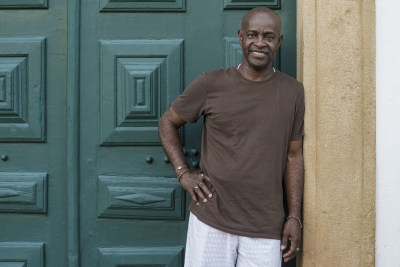
36ª bienal de são paulo
alberto pitta 11.6.2025Nara Roesler congratulates Alberto Pitta on his participation in the 36ª Bienal de São Paulo! The 36ª Bienal de São Paulo, titled ‘Nem todo viandante...Read more -
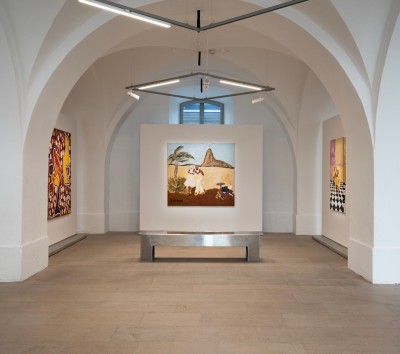
carnival an odyssey of brazilian art
nara roesler artists 16.5.2025Carnival: An Odyssey of Brazilian Art is now on view at CFHILL in Sweden. Curated by Cecilia Dupire, the exhibition brings together artists exclusively represented...Read more -
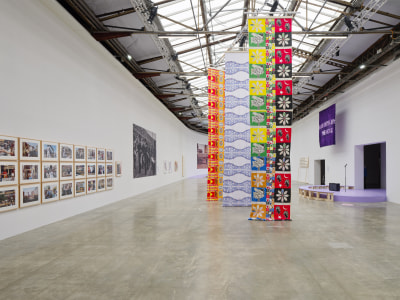
collective joy – learning flamboyance!
alberto pitta 20.2.2025Alberto Pitta is part of Collective Joy – Learning Flamboyance! , a group exhibition currently on view at the Palais de Tokyo in Paris, France....Read more -

lélia em nós: festas populares e amefricanidade
alberto pitta 27.6.2024Alberto Pitta is one of the artists featured in the exhibition Lélia em nós: festas populares e amefricanidade, on view at Sesc Vila Mariana. The...Read more -
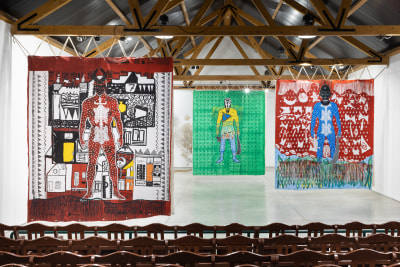
stirring the pot
alberto pitta 27.6.2024In partnership with the Fortes D'aloia & Gabriel, Nara Roesler is pleased to present Stirring the Po t, a summer group exhibition curated by Nancy...Read more
-
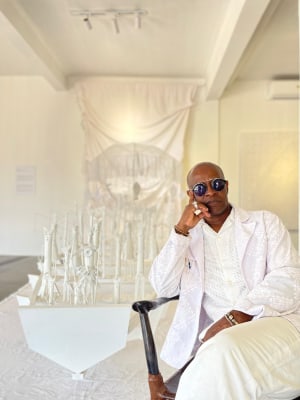
catch the invisible
alberto pitta 5.6.2024Alberto Pitta participates in Catch the invisible , a group exhibition at Galerie Attis Dakar in the Senegalese capital. As part of the Dakar...Read more -

diante do outro
alberto pitta 21.5.2024Alberto Pitta is part of the exhibition Diante do outro, on show at the Casa de Cultura do Parque in São Paulo until June 30....Read more

